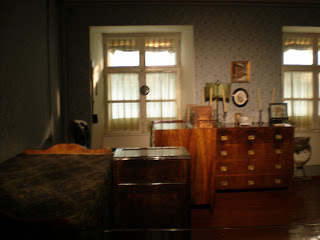Tuesday, August 17
Today we had a very interesting political discussion in class on the place of Turkey in modern Europe. The debate today is whether or not Turkey should be admitted to the European Union. Currently, it looks as though the country on the border of Europe and the Middle East will not be admitted to the EU, despite the strong support of the United States. The United States views Turkey’s admittance into the EU as step towards securing it as a Muslim ally of the West. It also sees it as an opportunity to lock in a secular and democratic government since it would have to comply with EU regulations. Many in favor of its acceptance see the EU’s refusal or tabling of the issue to be racially and religiously motivated. Other European countries that have a white and Christian background but do not comply fully with the regulations have been admitted. One example of this is Romania, which was admitted despite its widespread corruption, which is against EU regulation. It also has a stronger economy than many of the small and weak state of the EU such as Greece.
Turkey has a long history of involvement with Europe. They fought with the Central Powers during World War I, which subsequently brought the Ottoman Empire to an end. They also ruled many of the modern southeastern European countries, such as Albainia (a predominately Muslim country), Bosnia-Herzegovina, Bulgaria Croata, Greece, Hungary, Romainai, and Serbia. It still shares the island of Cyprus with Greece. Turkey even had the support of Louis XIV of France against the Austrians. Despite their often shared history, the EU often defines itself by the Christian boundaries of Europe.
 After class, we went on a self-guided walking tour of the Jugenstill or Art Nuveau buildings around Vienna. For this we examined the Seccession building, and the two Majolica buildings on the Ringstrasse facing across from the Nashmarkt. Jugenstill was a reaction against the historical styles of the 19th century. The artists of this movement believed that each era deserved its own art so they were determined to create a new form of art. They especially rebelled against the extravagant designs of the Baroque style.
After class, we went on a self-guided walking tour of the Jugenstill or Art Nuveau buildings around Vienna. For this we examined the Seccession building, and the two Majolica buildings on the Ringstrasse facing across from the Nashmarkt. Jugenstill was a reaction against the historical styles of the 19th century. The artists of this movement believed that each era deserved its own art so they were determined to create a new form of art. They especially rebelled against the extravagant designs of the Baroque style.  We revisited Turkish history as we visited the Wiener Museum. There were featured two works of art, one of the great Austrian war hero Eugene of Savoy and the other of the Ottoman military general Pasha. While Pasha was depicted as a forlorn, distraught, and defeated man, Eugene is depicted as a victorious decorated military hero, much grander than his probable true appearance. This demonstrates the skewed view of history that was created through the art and history of the victor.
We revisited Turkish history as we visited the Wiener Museum. There were featured two works of art, one of the great Austrian war hero Eugene of Savoy and the other of the Ottoman military general Pasha. While Pasha was depicted as a forlorn, distraught, and defeated man, Eugene is depicted as a victorious decorated military hero, much grander than his probable true appearance. This demonstrates the skewed view of history that was created through the art and history of the victor.Then we ventured off to the Wien Museum, which was really amazing and a great introduction/review of the history of the city. I wish this would have been the first museum that I had visited because it really would have helped me get a quick and efficient overview. The museum was just the right length and not daunting at all. It was divided up into the different historical periods of the city and had lots of English, which really helps! There they had the original medieval windows from St. Stephens. They were so beautiful and one could really understand how they would have made the church so much brighter. During the Baroque period, the original windows were taken out of St. Stephens and replaced with plan pail colored class of many different colors.




No comments:
Post a Comment